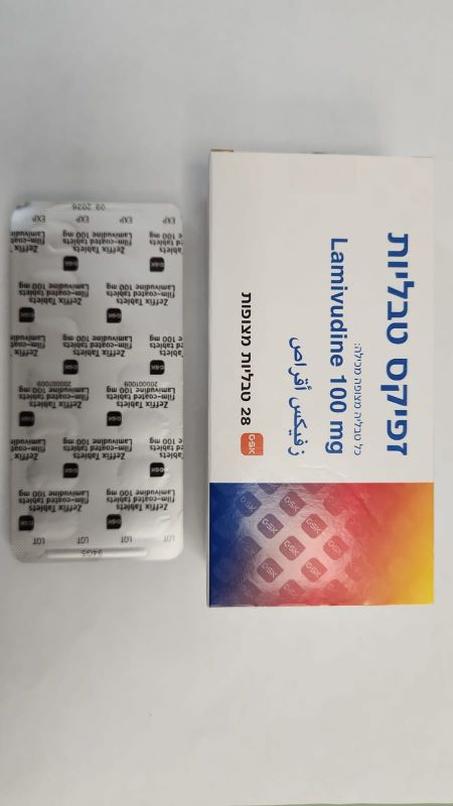Quest for the right Drug

זפיקס טבליות ZEFFIX TABLETS (LAMIVUDINE)
תרופה במרשם
תרופה בסל
נרקוטיקה
ציטוטוקסיקה
צורת מתן:
פומי : PER OS
צורת מינון:
טבליות מצופות פילם : FILM COATED TABLETS
עלון לרופא
מינוניםPosology התוויות
Indications תופעות לוואי
Adverse reactions התוויות נגד
Contraindications אינטראקציות
Interactions מינון יתר
Overdose הריון/הנקה
Pregnancy & Lactation אוכלוסיות מיוחדות
Special populations תכונות פרמקולוגיות
Pharmacological properties מידע רוקחי
Pharmaceutical particulars אזהרת שימוש
Special Warning עלון לרופא
Physicians Leaflet
Posology : מינונים
2 DOSAGE AND ADMINISTRATION 2.1 HIV Counseling and Testing HIV counseling and testing should be offered to all patients before beginning treatment with ZEFFIX and periodically during treatment because of the risk of emergence of resistant human immunodeficiency virus type 1 (HIV-1) and limitation of treatment options if ZEFFIX is prescribed to treat chronic hepatitis B infection in a patient who has unrecognized HIV-1 infection or acquires HIV-1 infection during treatment [see Warnings and Precautions (5.2)]. 2.2 Recommended Dosage for Adult Patients The recommended oral dosage of ZEFFIX is 100 mg once daily. 2.3 Recommended Dosage for Pediatric Patients The recommended oral dosage of ZEFFIX for pediatric patients aged 2 to 17 years is 3 mg per kg once daily up to a maximum daily dosage of 100 mg. The oral solution formulation should be prescribed for patients requiring a dosage less than 100 mg or if unable to swallow tablets. 2.4 Patients with Renal Impairment Dosage recommendations for adult patients with reduced renal function are provided in Table 1 [see Clinical Pharmacology (12.3)]. Table 1. Dosage of ZEFFIX in Adult Patients with Renal Impairment Creatinine Clearance (mL/min) Recommended Dosage of ZEFFIX 50 100 mg once daily 30-49 100 mg first dose, then 50 mg once daily 15-29 100 mg first dose, then 25 mg once daily 5-14 35 mg first dose, then 15 mg once daily <5 35 mg first dose, then 10 mg once daily Following correction of the dosage for renal impairment, no additional dosage modification of ZEFFIX is required after routine (4-hour) hemodialysis or peritoneal dialysis [see Clinical Pharmacology (12.3)]. There are insufficient data to recommend a specific dosage of ZEFFIX in pediatric patients with renal impairment. 2.5 Important Administration Instructions • ZEFFIX tablets and oral solution may be administered with or without food. • The tablets and oral solution may be used interchangeably [see Clinical Pharmacology (12.3)]. • The oral solution should be used for doses less than 100 mg. • ZEFFIX should not be used with other medications that contain lamivudine or medications that contain emtricitabine. 2.6 Assessing Patients during Treatment Patients should be monitored regularly during treatment by a physician experienced in the management of chronic hepatitis B. During treatment, combinations of events such as return of persistently elevated alanine aminotransferase (ALT), increasing levels of HBV DNA over time after an initial decline below assay limit, progression of clinical signs or symptoms of hepatic disease, and/or worsening of hepatic necroinflammatory findings may be considered as potentially reflecting loss of therapeutic response. Such observations should be taken into consideration when determining the advisability of continuing therapy with ZEFFIX. The optimal duration of treatment, the durability of Hepatitis B e Antigen (HBeAg) seroconversions occurring during treatment, and the relationship between treatment response and long-term outcomes such as hepatocellular carcinoma or decompensated cirrhosis are not known.

שימוש לפי פנקס קופ''ח כללית 1994
לא צוין
תאריך הכללה מקורי בסל
01/01/2000
הגבלות
תרופה מוגבלת לרישום ע'י רופא מומחה או הגבלה אחרת
מידע נוסף
